Two and a half hours (by motorboat) off the coast of Whangarei, New Zealand, lies a group of isolated islands known as the Mokohinau Island Group. This group consists of 22 islands and rock stacks, including Fanal Island (73 ha), Burgess Island (52 ha) and the Flax Islands (or Knights Group).
The islands were formed through volcanic activity on the edge of the continental shelf and erosional processes that have occurred in the last million years, during sea level fluctuations relating to changes in climate. This significant period of isolation from mainland New Zealand has resulted in the fauna and flora evolving into interesting and unique forms; many of which are not found anywhere else in the world!
Following a relatively short history of Maori and European occupation (mainly for seabird harvesting, fishing and farming), the Islands were designated as protected island reserves and have remained free of introduced pest animals since 1990.
My first introduction to the Mokohinau Islands was in 2007, when I joined an expedition out to Fanal Island in search of the recently recognised and undescribed Mokohinau gecko (Dactylocnemis ‘Mokohinau’). After three days of searching we failed to locate even a single individual. Turns out they probably don’t even exist on that island!!! However, we did come across plenty of New Zealand’s largest gecko, the Duvaucel’s gecko (Hoplodactylus duvaucelii).
Then…in early 2012 my partner (Sarah Wells) and I were invited to join a seabird researcher (Megan Young) on Burgess Island, for 8 days of serious fun. A rough trip out to the island left us a little worse for wear, however we soon felt better once we began the task of transferring our equipment onto the island via the tiny inflatable dingy. The wildlife of Burgess Island is amazing, and tui, bellbird and kakariki could be heard and seen flying above the bay as soon as we stepped foot onto the island. Within 5 miutes we had seen shore skinks (Oligosoma smithi) within the rocks of the boulder beach.
Waving goodbye to our boat, we collected up our gear and began the arduous trek up the hill towards our new home for the next 8 days. Finally reaching the bunkhouse, we quenched our thirst with a few glasses of water from a container in the kitchen and waited for Megan to join us. Once Megan had arrived she began her introduction to the island by warning us about drinking the water in [this] container on the bench. Turns out, the water was collected from the rainwater tanks where a bunch of rotten, decaying geckos and a putrid kakariki had been fished out the day before!!! I thought the water tasted a little…different!!!
The bunkhouse (owned and maintained by Maritime New Zealand) is built on top of the hill (110 m), adjacent to the lighthouse, and takes the form of an ‘A’ shaped ski hut, complete with 6 bunks, a large living and kitchen area, and even a flush toilet. Since there is no permanent water on the island, 20 litre containers of fresh water need to be carted up from the beach on regular basis, and we were limited to rainwater – collected in to large water tanks outside – for washing dishes and flushing the toilet. Considering that most of the rain storms completely bypass the island, and there hadn’t been rain for weeks, we were highly restricted in our water use. So…showers were out of the question and if it’s yellow let it mellow, if it’s brown flush it down became the applied rule.
Every morning we set off down the ‘skink highway’ track across the Muehlenbeckia hillside towards the northern headland. Known as the ‘skink highway’ due to the ridiculous number of moko skinks that sun-basked on the track, I decided to count the number of skinks seen on the 150 m long track over five days.
The figures below show the average number of moko skinks seen during the morning and afternoon, over a 5 day period (16 – 20 Feb 2012).
Time No. O. moco
9:09 53.2
11:59 14.4
Once we had tip-toed down ‘skink highway’, trying hard not to stand on any skinks, we were faced with The Crag! A narrow, steep-sided ridge which connected the northern headland with the rest of the island. Ropes helped us across and after a short walk over the hill we arrived at our destination, the end of the headland where a large group of white-faced storm petrels (Pelagodroma marina) had set up their colony.
The morning rounds involved checking and removing chicks from the burrows, weighing and measuring them, attaching PIT tags to some individuals, and then checking the weather-proofing of the burrow before placing them back inside. Automatic PIT tag recorders were set up at the entrance to burrows of some individuals in order to record the ‘exploratory movements’ of the chicks. Just prior to fledging, the chicks will venture a short distance in and out of their burrows. It is thought that this provides an opportunity for the birds to imprint themselves with the location of their burrows and colony. This will become important later in life when the birds, as adults, return to the exact location of their fledging burrow and breed for themselves.
With work over for the rest of the day, the afternoons were filled with spearfishing, snorkeling, lizard hunts and bird watching (the bellbirds, tui and kakariki were particularly common). The waters surrounding the island are abundant with life, and large schools of blue maumau, kawhai, pipefish and trevally can be seen in the bay. Pigfish, banded wrasse, porae, spottys, demoiselles, black angelfish, red moki, pororae, butterfish, and leatherjackets are frequently seen during dives. Snapper and huge kingi’s pass by frequently too.
At night is when things start to get crazy! Take one step outside the bunkhouse and half a dozen Mokohinau geckos will scatter off into the Muehlenbeckia and Coprosma shrubs in front of you. You need to take special care when walking the tracks at night to avoid crushing some of the thousands of geckos that inhabit Burgess Island. Although not officially calculated, I would estimate the density of Mokohinau geckos to be 3 per m² (30,000 geckos per hectare!!!) in many areas on the island (e.g. Muehlenbeckia dominated habitats). These densities are some of the highest I have ever observed on protected offshore islands in New Zealand.
Night is also reserved for the seabirds, who return from a day of hunting fish and crustaceans on the ocean surface, to their burrows where noisy, hungry chicks await to be fed. White-faced storm petrels (Pelagodroma marina), black-winged petrels (Pterodroma nigripennis), sooty shearwaters (Puffinus griseus), fluttering shearwaters (Puffinis gavia), and grey-faced petrels (Pterodroma macroptera gouldi) are all there, in a cacophony of honks, shrills and trills as they sore over the colonies. Opportunities were taken to catch, measure, and collect blood samples from adult WF storm petrels that happened to land near the tracks. Venturing off the track network was not advised as the ground below your feet hid a large network of shallow seabird burrows. The accidental collapse of these burrows could potentially result in death, from crushing, of vulnerable chicks that lay within.
Down in the rocky boulders of the bay, another species of large lizard stirs under the moonlight. New Zealand’s only native egg-laying (oviparous) skink, the Suter’s skink (Oligosoma suteri) can be found in the hundreds, moving over the boulders and seaweeds in search of invertebrates and small crustaceans. Suter’s skinks can vary in colour however two colour forms are generally recognised: a uniform, almost black variant, and a rather more striking variant with pale grey sides and a dark dorsal surface, flecked with browns and oranges. Their colours and patterns match the decaying seaweed perfectly, and their sharp pointed faces allow them to squeeze between the smallest gaps in the rocks to escape from predators…and lurking photographers.
After eight days of paradise, Sarah and I were disappointed to pack up and leave. Where else can you spend a week and see hoards of threatened seabirds flying over at night, observe thousands of lizards scattering from beneath your feet, hear juvenile bellbirds, kakariki, and tui practice their songs, see sharks swimming in the bay, be ‘cleaned’ by groups of banded wrasse while snorkeling, and sample a herbal gecko and kakariki-infused tea!
The Mokohinau Islands represent a special place where native wildlife exists and thrives in the absence of pest mammals. I only hope that this pest-free state will remain into the future, and ignorant visitors don’t threaten the work of millions of years of evolution, by re-introducing rats to the islands. This is a significant risk and is highlighted by the fact that groups of people illegally camped and landed on Lizard Island during our time on Burgess. Education and public awareness of the significance of protected offshore islands (including DOC signage on the islands) may help reduce these risks. However, some people will always remain ignorant!
We departed the island, leaving Megan and Jacinda ashore for a further 7 days of ‘petreling’, and boarded the ‘Assassin’ charter boat to meet Chris Gaskin, Jean-Claude Stahl, and Dylan Owen. This team had spent the day out on the water in search of the rare and endangered New Zealand storm petrel (Pelaeornis maoriana). Thought to be extinct since 1850, this small beautiful bird was rediscovered in 2003 close to the Mercury Islands off the Coromandel coast. Chris Gaskin has been researching this species ever since and is working towards locating the nesting sites/ colony which is likely to occur on a remote island(s) in the outer Huaraki Gulf.
Sarah and I spent the remainder of the evening and well into the night aboard the storm petrel boat, scanning the horizon for birds and chumming (throwing ‘chum’ or offal into the water) to try and attract the birds. And gosh did we attract!….hoards of greedy flesh-footed shearwaters (Puffinus carneipes), a stunning blue shark (Prionace glauca), black petrels (Procellaria parkinsoni), Buller’s shearwaters (Puffinus bulleri), a white-necked petrel, and our new acquaintances the white-faced storm petrels.
And finally, several kilometers out to sea, we finally saw our first New Zealand storm petrel. They are an interesting bird to observe, resembling a tomtit in appearance and flying in the manner of a welcome swallow. Zipping around across the surface of the ocean.
Late that night we anchored off a remote Island, turned on the spotlights and began chumming. Within 30 minutes there were 6-7 NZ storm petrels circling the boat!…as well as a juvenile mako shark! After a failed netting attempt to capture a bird, one of the storm petrels, presumably attracted to the spotlights, landed at Sarah’s feet on the back of the boat! This event quickly boosted our energy levels and enthusiasm, and Sarah had the pleasure of banding the 30th New Zealand storm petrel ever captured. Success!
Given the ‘high’ activity of NZ storm petrels that evening and the proximity to the Island, it is postulated that the steep, rugged, inaccessible cliffs may harbour the only breeding site(s) of one of our most enigmatic birds.
See Jean-Claude Stahl’s Te Papa Blog for more information.
I am grateful to both Megan Young and Chris Gaskin for giving me the opportunity to visit amazing islands and work with such beautiful animals. Your passion for and knowledge of seabirds is admirable and I hope you are both able to contribute valuable information to help conserve these little native gems.




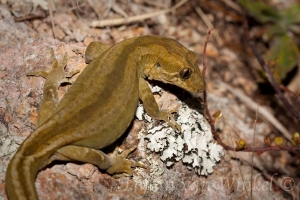








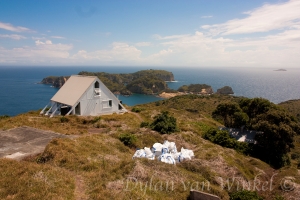





















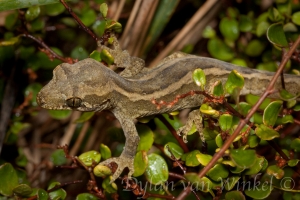

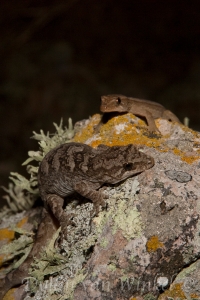




























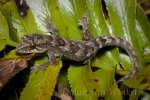














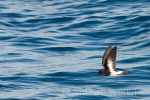

































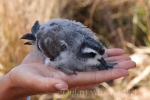



























































Leave a comment